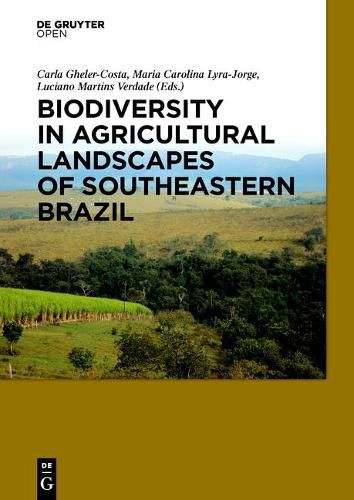Readings Newsletter
Become a Readings Member to make your shopping experience even easier.
Sign in or sign up for free!
You’re not far away from qualifying for FREE standard shipping within Australia
You’ve qualified for FREE standard shipping within Australia
The cart is loading…






This title is printed to order. This book may have been self-published. If so, we cannot guarantee the quality of the content. In the main most books will have gone through the editing process however some may not. We therefore suggest that you be aware of this before ordering this book. If in doubt check either the author or publisher’s details as we are unable to accept any returns unless they are faulty. Please contact us if you have any questions.
The state of Sao Paulo, Brazil, is one of the most densely populated and developed areas in South America. Such development is evident both in terms of industrialization and urbanization, as well as in agriculture, which is heavily based on sugar cane, Eucalyptus plantations and livestock. This intense land use has resulted in great alteration of the original land cover and fragmentation of natural ecosystems. For these reasons, it is almost a paradox that jaguar, a species that requires large areas of pristine forest to exist, is still found in some parts of the state of Sao Paulo. It is possible that wild animals could leave in coexistence with intense land use, or is it the case that such rare encounters with large wild animals in Sao Paulo will disappear in the near future? All ecologists are aware of the problems of habitat changes caused by humans, but it was not until recent years that researchers started to consider that the land used for production could also serve as an important habitat for many different kinds of wild species. This book is about this new approach to conservation. It also highlights the important role that sciences could and should have in this discussion in order to better understand the problems and propose possible solutions.
$9.00 standard shipping within Australia
FREE standard shipping within Australia for orders over $100.00
Express & International shipping calculated at checkout
This title is printed to order. This book may have been self-published. If so, we cannot guarantee the quality of the content. In the main most books will have gone through the editing process however some may not. We therefore suggest that you be aware of this before ordering this book. If in doubt check either the author or publisher’s details as we are unable to accept any returns unless they are faulty. Please contact us if you have any questions.
The state of Sao Paulo, Brazil, is one of the most densely populated and developed areas in South America. Such development is evident both in terms of industrialization and urbanization, as well as in agriculture, which is heavily based on sugar cane, Eucalyptus plantations and livestock. This intense land use has resulted in great alteration of the original land cover and fragmentation of natural ecosystems. For these reasons, it is almost a paradox that jaguar, a species that requires large areas of pristine forest to exist, is still found in some parts of the state of Sao Paulo. It is possible that wild animals could leave in coexistence with intense land use, or is it the case that such rare encounters with large wild animals in Sao Paulo will disappear in the near future? All ecologists are aware of the problems of habitat changes caused by humans, but it was not until recent years that researchers started to consider that the land used for production could also serve as an important habitat for many different kinds of wild species. This book is about this new approach to conservation. It also highlights the important role that sciences could and should have in this discussion in order to better understand the problems and propose possible solutions.